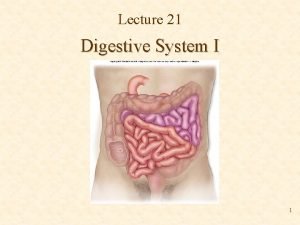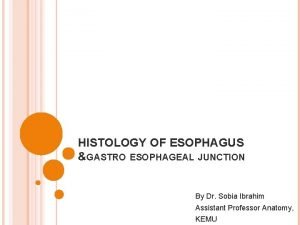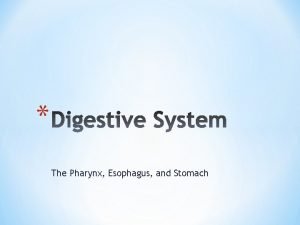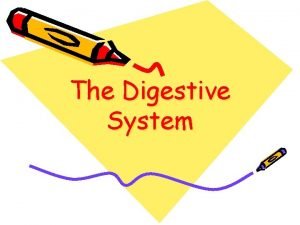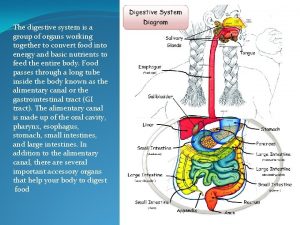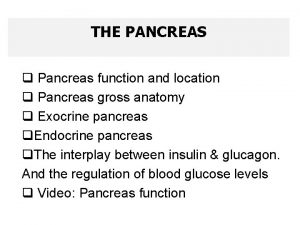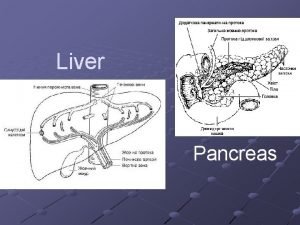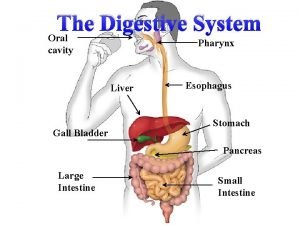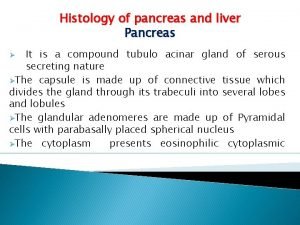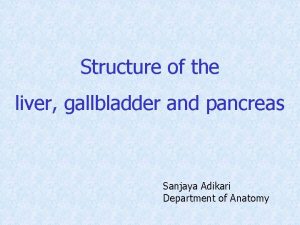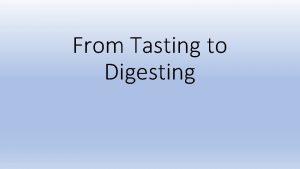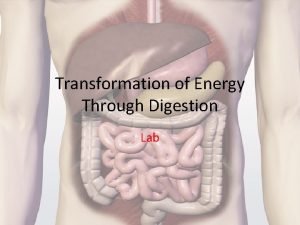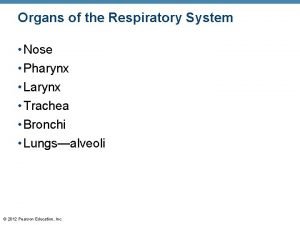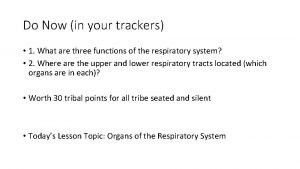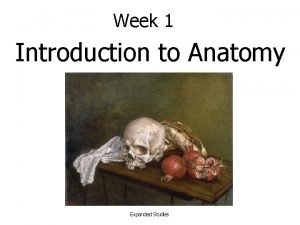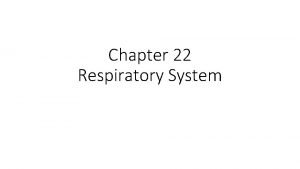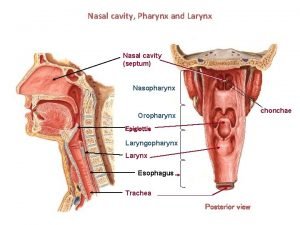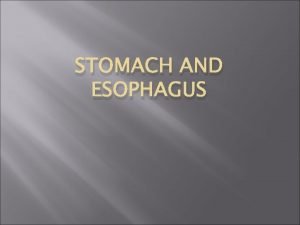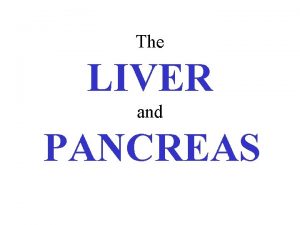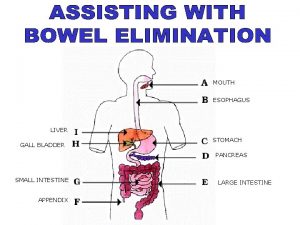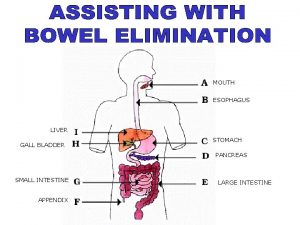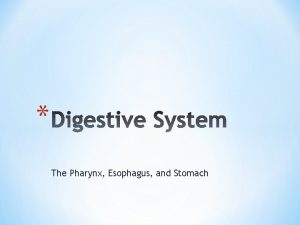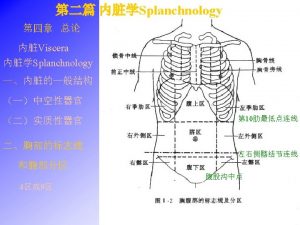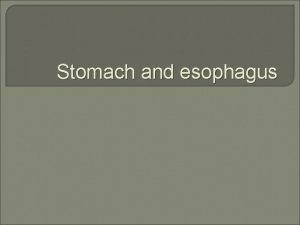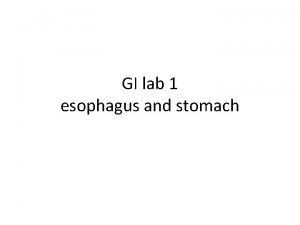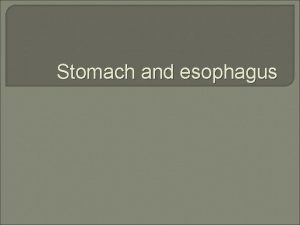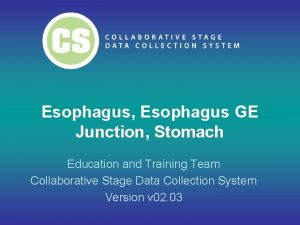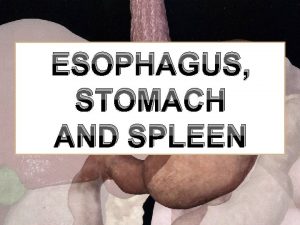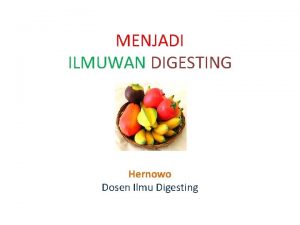Still Digesting Pharynx esophagus stomach pancreas and liver
















- Slides: 16

Still Digesting Pharynx, esophagus, stomach, pancreas, and liver

Pharynx n Connects nasal and oral cavities to larynx and esophagus n 3 Parts – you do not need to know def. of each Nasopharynx – w/ nasal cavity provides passage for breathing n Oropharynx – posterior to soft palate, inferior to nasal cavity; passage for food from mouth, and air to/from nasal cavity n Laryngopharynx – inferior to oropharynx, passage to esophagus n

Friday Writing Reflection n On a sheet of paper to be turned in in Bin C at the end of the period, please write 100 -150 words on the following prompt: n Who are 2 people that you admire? Choose 1 adult (20+ years old) and 1 high school student. Why? What qualities do they embody? n How do they stand out from the rest of their peers? n

Epiglottis n Directs food down into esophagus while preventing food/liquids from entering larynx/trachea n Will get confused if you try to do too many things at once…thus you choke n Epiglottis Animation n Swallowing Animation

Esophagus n Straight collapsible tube, 25 cm long n Passageway for food from pharynx to stomach n Connects to stomach at cardiac sphincter (thickened wall of circular smooth muscle)


Stomach n Capacity 1 liter n 4 regions n Cardiac – near esophagus n Fundic – temporary storage area n Body – main portion n Pyloric – end of stomach pyloric canal n Ends in pyloric sphincter which controls gastric emptying


Gastric Secretion n Gastric juice – products of mucous cells, chief cells, and parietal cells n Those 3 cells make up the gastric glands

Gastric Secretion cont. Component Source Function Pepsinogen Chief cells from gastric gland Inactive form of pepsin Pepsin Formed when pepsinogen reacts with acid Protein splitting enzyme that digests nearly all types of dietary protein Hydrochloric Acid (HCl) Parietal cells from gastric gland Acid environment for conversion of pepsinogen to pepsin Mucus Goblet cells and mucous glands Provides viscous, alkaline protective layer on the inside stomach wall Intrinsic factor Parietal cells of the gastric Aids in Vitamin B 12 glands absorption

Regulation of Gastric Secretions n Juice produced continuously; rate varies controlled neurally and hormonally n Parasympathetic impulses on vagus nerve stimulate stomach cells to release gastrin n Gastrin – peptide hormone that increases secretory activity of gastric glands n Sympathetic impulses in small intestine trigger release of cholecystokinin n Cholecystokinin – hormone that decreases gastric motility as small intestine fills with food n Note: the stomach does not absorb nutrients…only alcohol and some lipid soluble drugs

Moving out of the Stomach n Chyme – semifluid paste of food particles and gastric juice Moves into the duodenum (first portion of small intestine) n Pancreas, liver, and gallbladder then add their secretions n Secretin and cholecystokinin – hormones secreted by duodenum to initialize pancreatic secretions n

Pancreas n Secretes digestive juice pancreatic juice n Pancreatic duct extends the length of the pancreas and connects to the duodenum n Pancreatic juice n n Pancreatic amylase – enzyme that breaks down carbs Pancreatic lipase – enzyme that breaks down lipids into fatty acids and glycerol Nucleases – enzymes that break down nucleic acids into nucleotides Sodium bicarbonate – chemical released to neutralize acid

Pancreas cont. n Protein splitting enzymes: n Trypsin, chymotrypsin, and carboxypeptidase n Split bonds between amino acids in proteins n Released in inactive forms n Activated in small intestine by other enzymes n Ex. Trypsinogen is turned into trypsin by enterokinase (produced by SI)

Liver n Located in upper quadrant of abdominal cavity just inferior to diaphragm n Reddish, brown well supplied w/ blood vessels n Hepatic cells produce bile Bile contains several ingredients the most important being bile salts n Bile salts break fat globules into smaller droplets emulsification n Lipases are then able to break them down n n Bile moves through hepatic ducts

Gallbladder n Stores bile produced by the liver n Cystic duct connects to the common hepatic duct to form the common bile duct n Be able to label these ducts on a diagram of the liver/gallbladder
 Pyloric orifice function
Pyloric orifice function Gastroesophageal junction histology labeled
Gastroesophageal junction histology labeled Valves in the stomach
Valves in the stomach Digestive system for labelling
Digestive system for labelling Esophagus stomach small intestine large intestine
Esophagus stomach small intestine large intestine Vascolarizzazione pancreas
Vascolarizzazione pancreas Liver and pancreas function
Liver and pancreas function Pharynx in digestive system
Pharynx in digestive system Pancreasitis
Pancreasitis Space of disse
Space of disse From tasting to digesting
From tasting to digesting What energy transformations take place during digestion?
What energy transformations take place during digestion? Lumen of larynx
Lumen of larynx Pharynx and larynx and trachea
Pharynx and larynx and trachea Identify the organ
Identify the organ Parts of the nose
Parts of the nose Pharynx
Pharynx
